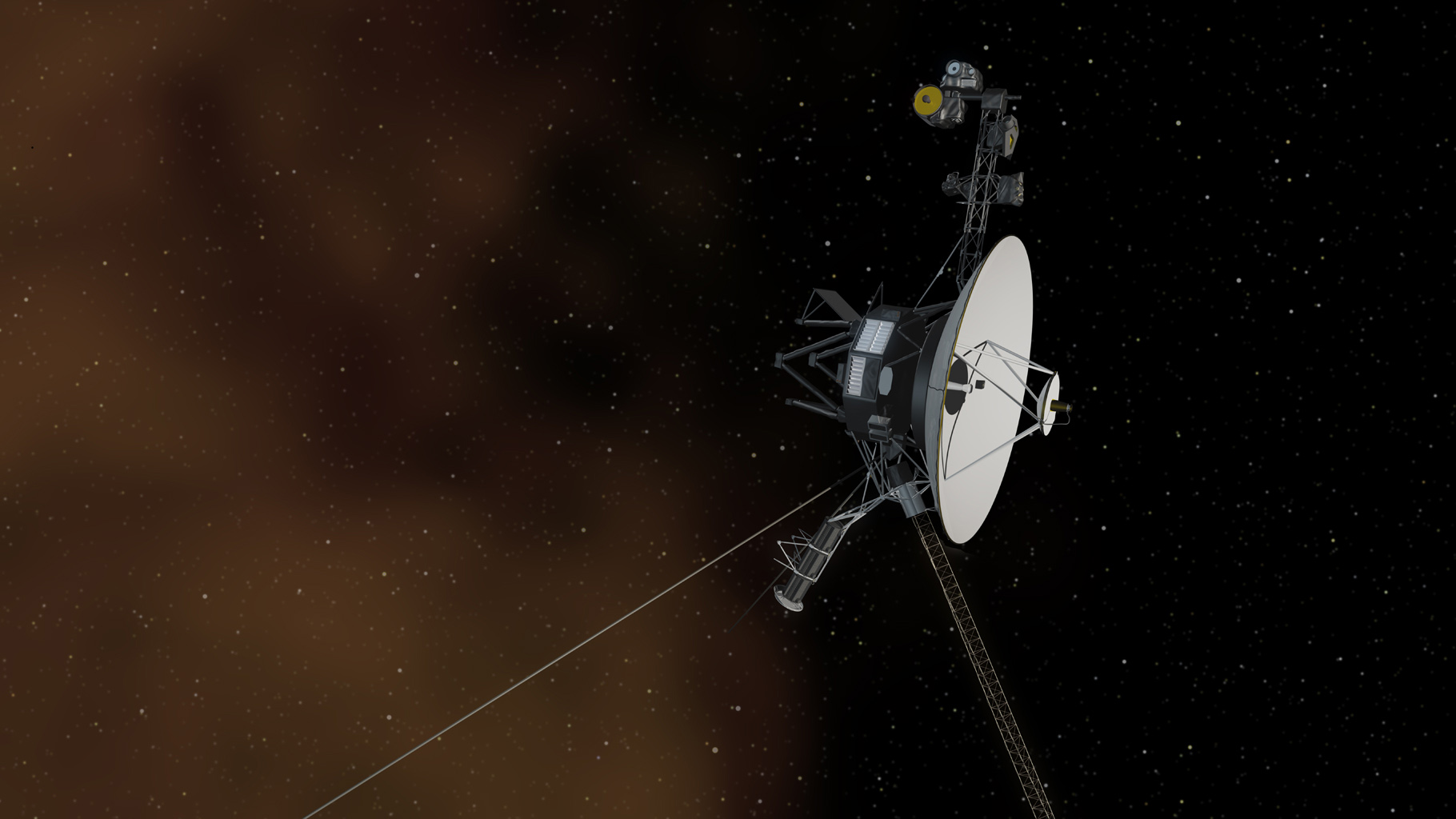Voyager 2 bounces back from glitch in interstellar space

Voyager 2 is taking the measure of its exotic surroundings once again.
On Jan. 25, the venerable probe, which has been exploring interstellar space since November 2018, failed to execute a spin maneuver as intended. As a result, two onboard systems remained on longer than planned, sucking up so much energy that Voyager 2 automatically shut off its science instruments.
Mission team members expressed confidence at the time that they could troubleshoot the problem, and their confidence has been borne out: Voyager 2's science gear is back up and running, NASA announced Wednesday (Feb. 5).
Related: Photos from NASA's Voyager 1 and 2 probes
"Mission operators report that Voyager 2 continues to be stable and that communications between Earth and the spacecraft are good," agency officials wrote in a mission update yesterday. "The spacecraft has resumed taking science data, and the science teams are now evaluating the health of the instruments following their brief shut-off."
Voyager 2 and its twin, Voyager 1, launched a few weeks apart in 1977 to perform an unprecedented "grand tour" of the outer solar system. Both spacecraft conducted flybys of Jupiter and Saturn, revealing a great deal about the solar system's two biggest planets. Voyager 2 then zoomed past Uranus in 1986 and Neptune in 1989; the probe remains the only craft to have gotten up-close looks at either of these "ice giants."
And both Voyagers just kept on flying, entering extended interstellar missions. Voyager 1 popped free into interstellar space in August 2012, and its twin followed suit six years later.
Breaking space news, the latest updates on rocket launches, skywatching events and more!
The two spacecraft are still going strong after more than 42 years in space, but they can't keep up their pioneering work forever. The radioisotope thermoelectric generators that power the Voyagers are running low on juice and will likely be tapped out by the mid-2020s, NASA officials have said.
Voyager 1 and Voyager 2 are currently about 13.8 billion miles (22.2 billion kilometers) and 11.5 billion miles (13.5 billion km) from Earth, respectively. It takes more than 17 hours for light to travel from Earth to Voyager 2, meaning that mission team members have to wait a day and a half to see if their commands work.
- Voyager at 40: 40 photos from NASA's epic 'grand tour' mission
- What spacecraft will enter interstellar space next?
- Voyager 2 went interstellar the same day a probe touched the sun
Mike Wall's book about the search for alien life, "Out There" (Grand Central Publishing, 2018; illustrated by Karl Tate), is out now. Follow him on Twitter @michaeldwall. Follow us on Twitter @Spacedotcom or Facebook.


Michael Wall is a Senior Space Writer with Space.com and joined the team in 2010. He primarily covers exoplanets, spaceflight and military space, but has been known to dabble in the space art beat. His book about the search for alien life, "Out There," was published on Nov. 13, 2018. Before becoming a science writer, Michael worked as a herpetologist and wildlife biologist. He has a Ph.D. in evolutionary biology from the University of Sydney, Australia, a bachelor's degree from the University of Arizona, and a graduate certificate in science writing from the University of California, Santa Cruz. To find out what his latest project is, you can follow Michael on Twitter.
